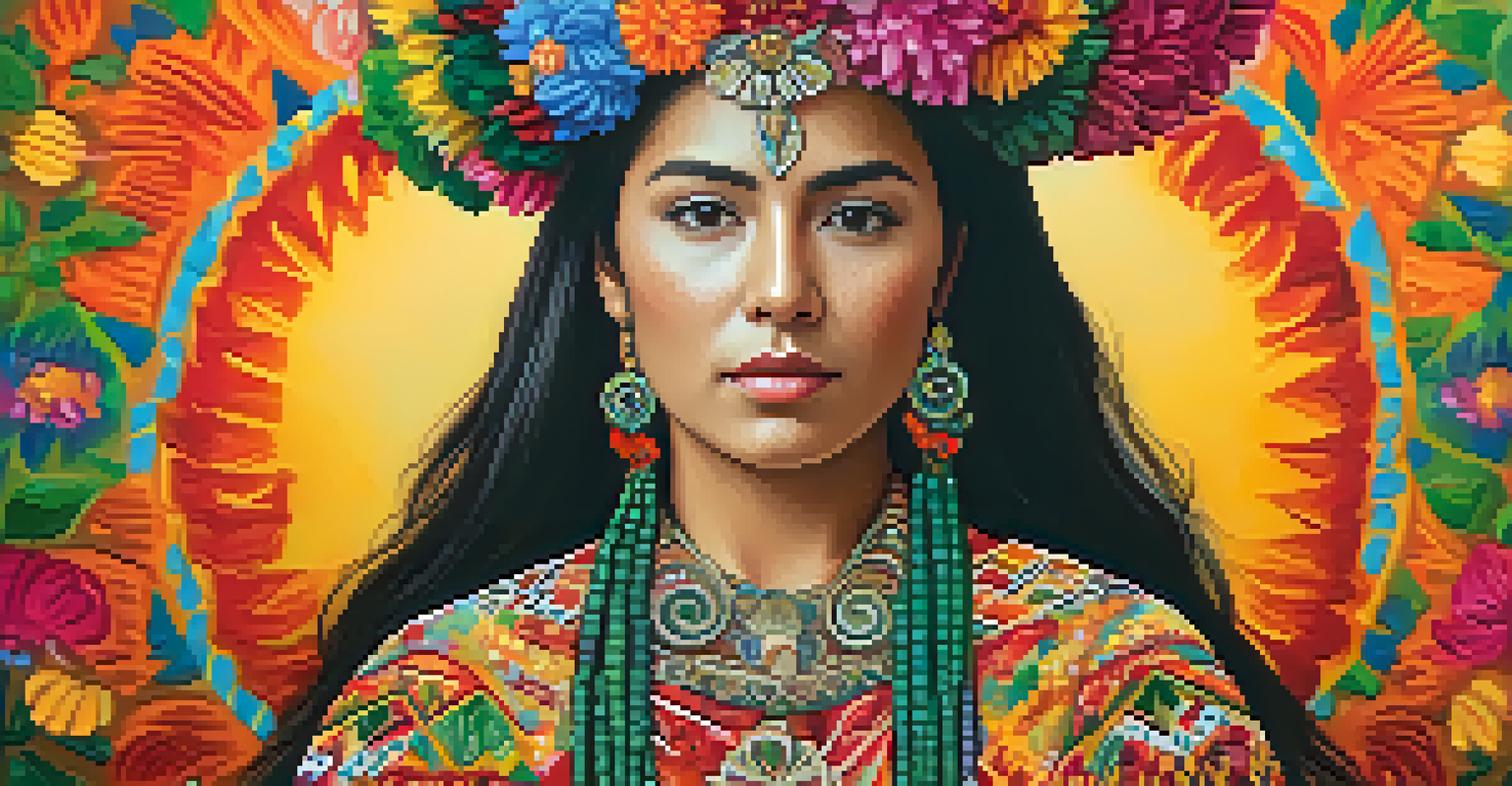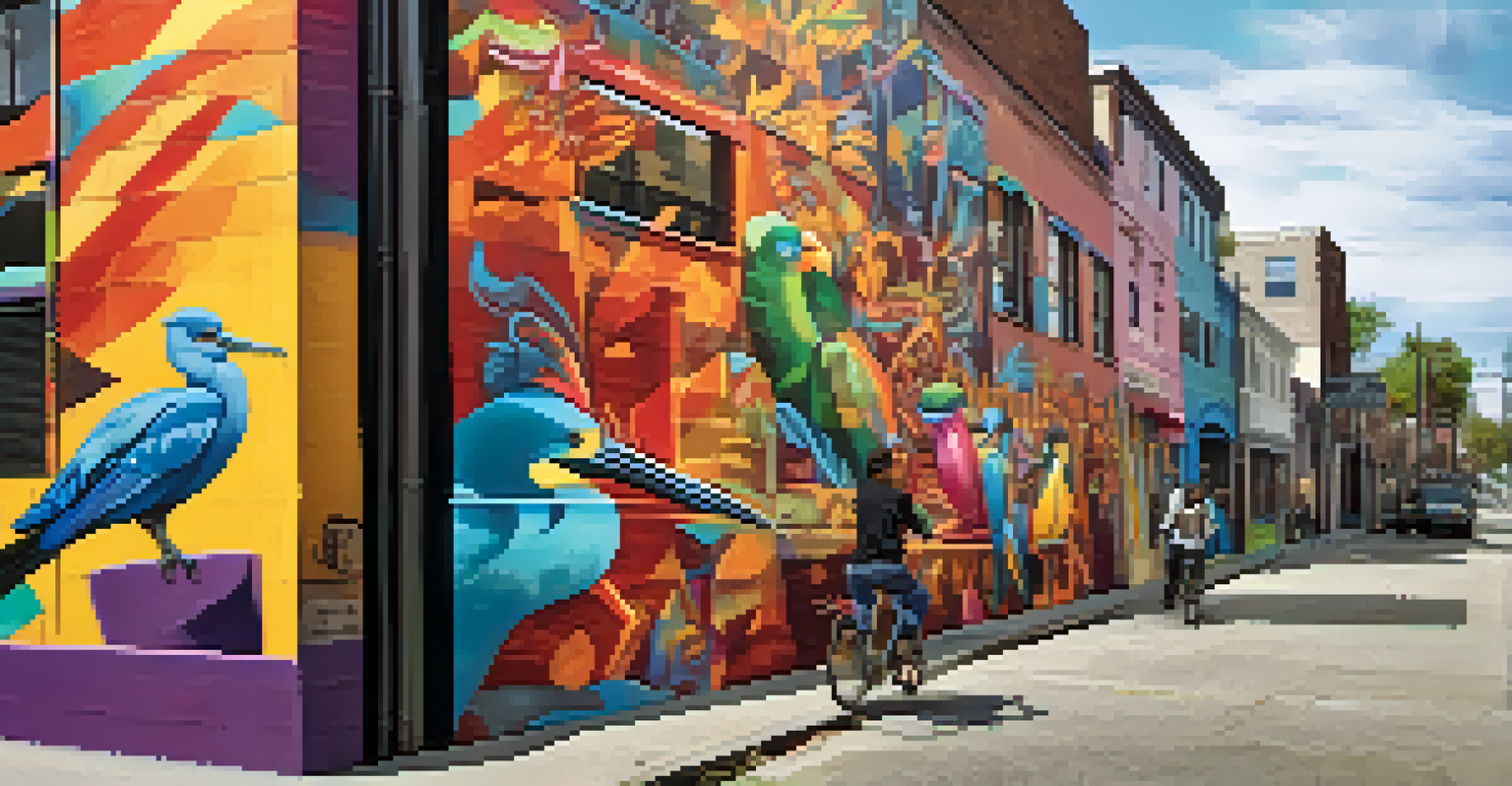Visual Storytelling: How Painting Captures Cultural Narratives

Understanding Visual Storytelling Through Art
Visual storytelling is the art of conveying narratives through imagery. In the realm of painting, artists create vivid scenes that encapsulate experiences, emotions, and histories. This form of expression allows viewers to dive deep into the cultural contexts behind the artwork, making the connection between image and story more profound.
Art is the most beautiful of all lies.
Think of a painting as a window; it provides a glimpse into another world. For example, a landscape painting may reflect the struggles and triumphs of a particular region's people, showcasing their relationship with nature. This interaction between the viewer and the artwork fosters a dialogue that transcends time and place.
Ultimately, visual storytelling in painting serves as a bridge connecting generations, cultures, and experiences. As we interpret these images, we are invited to explore the narratives that shape our understanding of humanity.
The Role of Cultural Context in Painting
Cultural context plays a pivotal role in how a painting is perceived and interpreted. Each brushstroke and color choice reflects the artist's background and the societal influences surrounding them. For instance, traditional African masks often symbolize power and spirituality, deeply rooted in the cultures they originate from.

When engaging with art, it's essential to consider the historical and societal factors that influenced the artist. A painting created during a period of unrest may convey emotions of struggle and resilience, while another from a time of peace could reflect harmony and joy. This understanding enriches our appreciation for the artwork.
Art as a Narrative Tool
Visual storytelling in painting allows artists to convey complex narratives and emotions through imagery, inviting viewers to explore deeper cultural contexts.
Moreover, the cultural narratives depicted in paintings can challenge or reinforce societal norms. As viewers, we must be aware of these dynamics, allowing us to engage in a deeper conversation about the messages behind the visuals.
Symbolism: The Language of Painting
Symbolism is a critical element in visual storytelling, giving depth to the narrative portrayed in paintings. Artists often use symbols to convey complex ideas, emotions, or cultural references that may not be immediately obvious. For example, a dove might represent peace, while a stormy sky could indicate turmoil.
Painting is just another way of keeping a diary.
Understanding these symbols enhances our engagement with the artwork. When we recognize that a particular color or object carries significant meaning, it transforms our interpretation of the piece. This layered approach invites us to look beyond the surface and explore the underlying messages.
As we analyze the symbols in paintings, we become active participants in the storytelling process. The artwork not only tells a story but also encourages us to reflect on our interpretations and the cultural narratives that influence them.
Famous Paintings and Their Cultural Impact
Many famous paintings have left an indelible mark on cultural narratives throughout history. Take Picasso's 'Guernica,' for instance. This powerful mural depicts the horrors of war and has become a symbol of anti-war sentiment, resonating deeply with audiences across generations.
Another example is Grant Wood's 'American Gothic,' which reflects American values during the Great Depression. The painting has sparked discussions about identity, resilience, and the American spirit, showcasing how art can shape and reflect societal narratives.
Cultural Context Shapes Perception
The cultural background and societal influences of an artist significantly impact how their work is interpreted and appreciated.
These iconic works demonstrate how paintings extend beyond their aesthetic appeal; they serve as cultural touchstones that provoke thought, inspire change, and capture the essence of human experiences.
Painting as a Reflection of Identity
Artistic expression is often intertwined with personal and cultural identity. Artists frequently draw upon their backgrounds, experiences, and heritage to inform their work. In doing so, they create paintings that resonate with their communities and reflect shared narratives.
For instance, Frida Kahlo's self-portraits delve into her Mexican heritage and personal struggles, articulating a sense of identity that is both unique and universal. Her work allows viewers to connect with her story while also sparking conversations about broader themes of identity and belonging.
Through these expressions, painting becomes a powerful means for individuals to assert their identities and share their narratives with the world, bridging the gap between personal and collective experiences.
The Evolution of Painting and Cultural Narratives
As societies evolve, so do their artistic expressions. The shift from traditional to contemporary painting reflects changing cultural narratives and values. Modern artists often challenge conventions, using their work to comment on social, political, and environmental issues.
For example, street art has emerged as a prominent form of visual storytelling, where artists use public spaces to convey messages that resonate with their communities. This evolution demonstrates how painting adapts to reflect the zeitgeist, making cultural narratives more accessible and relevant.
Symbolism Deepens Engagement
Understanding the symbols within paintings enhances our connection to the artwork, transforming our interpretations into active storytelling experiences.
By embracing new styles and mediums, artists continue to engage audiences in conversations about their cultures and experiences. This adaptability ensures that painting remains a vital form of storytelling in our ever-changing world.
The Future of Visual Storytelling in Painting
Looking ahead, the future of visual storytelling in painting is bright and full of potential. As technology advances, artists are exploring new mediums, such as digital art and virtual reality, to convey their narratives. This innovation opens up exciting possibilities for engaging audiences in immersive experiences.
Moreover, the global interconnectedness of our world allows for diverse cultural narratives to influence one another. Artists are increasingly collaborating across borders, blending styles and themes that enrich the storytelling process. These cross-cultural exchanges foster understanding and appreciation for different perspectives.

Ultimately, as we move forward, visual storytelling in painting will continue to evolve, reflecting the complexities of human experiences while inspiring future generations to communicate their narratives through art.